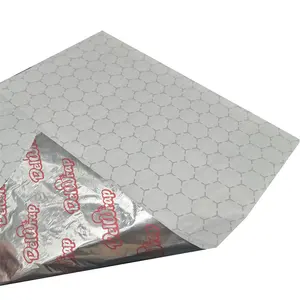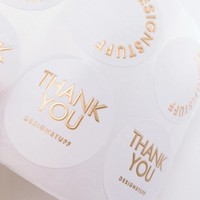
Restaurant Oil Proof Aluminum Foil Honeycomb Deli Parchment Paper Wrapping Kraft Paper Food Grade Burger Paper

8011 Best Selling Jumbo Roll Aluminum Foil/12 Mic Household Kitchen Aluminum Foil Roll Food Aluminum Foil Paper

















In an era where the unboxing experience is just as crucial as the product itself, the quest for innovative packaging solutions has led us to the versatile and protective qualities of foil paper. This ultimate guide to foil paper solutions will unwrap the myriad of ways aluminum foil is revolutionizing the packaging industry. From its unparalleled barrier properties that shield perishables from light and oxygen to its customizable features that meet the exacting demands of various industries, foil paper is not just a packaging material—it's a game changer. Join us as we delve into the significance, types, and applications of foil paper, and discover how platforms are making these solutions accessible and tailored for businesses worldwide.

Aluminum foil packaging serves as a robust solution for protecting products against various elements that can compromise their quality. The material acts as an effective barrier against oxygen and light, both of which can significantly diminish the shelf life of perishable goods, including food and pharmaceuticals. By sealing products with foil packaging, the risk of bacterial contamination is minimized, and the integrity of the contents is maintained.
The versatility of aluminum foil extends to its ability to be used as a heating element. Packages made from aluminum foil can be safely heated, providing convenience for consumers. Customization is another key feature, with the ability to tailor the dimensions of the foil to specific product requirements, allowing for a personalized approach to packaging design.
Aluminum foil is also recognized for its odor-blocking properties, preventing the transfer of unwanted smells and protecting the product's inherent aroma. This characteristic is particularly beneficial for items with a strong scent or those susceptible to odor absorption. The material's adaptability is further highlighted by its compatibility with various manufacturing strategies, which can contribute to cost efficiency and the potential for unique, eye-catching package designs.

A diverse range of foil paper products are available to meet the varying needs of consumers and businesses. Among the offerings, customers can find food-grade kitchen aluminum foil rolls, ideal for preserving freshness and maintaining the temperature of food. There are also aluminum foil in jumbo rolls, which are extensively used in industrial applications such as air conditioner fin stock.
For packaging solutions that require a combination of durability and sealability, aluminum foil laminated with materials like PET, PE, and paper is available. These composites are excellent for creating heat sealing materials that protect goods from moisture and contamination. Additionally, there are specialized foil papers like the aluminum foil scrim kraft paper, which serves as a heat insulation underlayment for roofing.
The versatility of foil paper is further exemplified by products such as custom rolling papers with gold foil embossing, oil-proof aluminum foil parchment for food wrapping, and laminated foil papers for burger wrapping. These materials are tailored to enhance the presentation and preservation of food items in restaurants and fast-food outlets.
Additionally, the range of aluminum foil paper products caters to the packaging needs of various other industries, including butter wrapping, pharmaceutical packaging, and even colorful gold foil papers for business cards. Options for custom logo printing on foil paper are a popular choice for branding and marketing purposes.
A spectrum of customization options for foil paper is available to cater to diverse branding needs. Clients can select from a wide array of hues to create custom colored foils that resonate with their brand identity. The ability to match colors to client specifications ensures that the foil paper aligns with the visual branding elements of the product.
The customization extends beyond colors, with the ability to add logos and designs to the foil paper, providing a unique and memorable unboxing experience. This customization is not limited to visual aspects; it also includes the choice between sheets and rolls, as well as supported (paper-backed) and unsupported forms, offering versatility for different packaging requirements.
The foil paper can be tailored for a variety of applications, including food service foils that are approved for direct and indirect food contact. The foils are adaptable for use in extreme environmental conditions, thanks to the high-temperature curing process for inks and coatings. This ensures that the packaging maintains its integrity and visual appeal under various conditions.
Moreover, there are options for surface treatments such as embossing and decorating, enhancing the tactile experience and visual aesthetics of the packaging. These detailed customization options enable businesses to elevate their product presentation and stand out in the competitive market.

Aluminium foil, a versatile material with a pliable nature, is extensively utilized across various industries. Its primary use is in packaging, where it serves to protect food, cosmetics, and chemical products, leveraging its ability to form a protective barrier. In the food industry, it's used to wrap chocolates, candies, and other edibles, ensuring freshness and longevity. The electronics sector employs aluminium foil for its excellent electrical conductivity, often incorporating it into the manufacturing of electrical cables and components for its ability to reflect electric waves. Additionally, its thermal insulation properties are harnessed in building and construction, contributing to energy efficiency. Despite its thinness, aluminium foil is a durable material, sometimes combined with plastics or paper to enhance its strength for more demanding applications.
High-quality foil paper, such as aluminium foil, is recognized for its total barrier properties, effectively blocking light, gases, and moisture. This makes it an excellent material for preserving the aroma and characteristics of products, extending their shelf life significantly without the need for refrigeration.
Aluminium foil's unique deadfold characteristics allow it to wrap around objects tightly without the need for additional adhesives. Its malleability means it can be deformed to fit various shapes while maintaining its barrier integrity, which is crucial for creating thin laminates that conserve resources.
The material's ability to remember its shape, especially at folds and rims, is advantageous for creating packaging solutions that are both effective and resource-efficient. The lightweight nature of alufoil contributes to economies in transport and storage, offering nesting shapes suitable for automated filling systems.
In terms of thermal properties, aluminium foil stands up to extreme temperature variations, making it suitable for processes from blast-freezing to baking. Its heat conductivity allows for quick dissipation of heat, which is beneficial for autoclaving and heat-sealing, potentially reducing processing times and aiding in energy conservation.
Aluminium foil is also non-toxic and sterile post-manufacturing, making it safe for direct food contact and resistant to bacterial growth. Its compatibility with various printing technologies allows for creative packaging designs, enhancing brand presence and identity while providing functional benefits like insulation and protection against electromagnetic interference.
Aluminium foil, a versatile packaging material, is produced in various thicknesses, with standard household foil typically being 0.016 mm thick, and heavy-duty foil at 0.024 mm. The manufacturing process often involves laminating the foil with plastics or paper to enhance its strength and utility. The material's pliability allows it to be easily wrapped around objects, making it a practical choice for packaging needs.
In terms of composition, aluminium foil is sometimes coated with a non-stick material on one side to provide additional functionality. Its reflective properties are significant, with bright aluminium foil reflecting about 88% of light, which can be contrasted with dull embossed foil's 80% reflectivity. These properties contribute to its insulation capabilities, making it a suitable material for protecting sensitive products.
The production of aluminium foil uses the continuous casting method, which is less energy-intensive compared to other methods. This process also allows for the creation of foil with one bright side and one matte side, a result of two sheets being rolled together and then separated after the final pass. The bright side's increased reflectivity can decrease both absorption and emission of radiation, a consideration important for certain packaging applications.
Aluminum foil packaging offers a robust solution for product protection, effectively sealing out oxygen and light, which can degrade many products, thereby extending their shelf life. This characteristic is particularly beneficial for food and pharmaceutical products, which are susceptible to bacteria and spoilage.
The versatility of aluminum foil allows for safe heating, making it a convenient option for food packages that can double as heating trays. Its customizable nature means that the dimensions of the foil can be tailored to specific packaging needs, aligning with marketing strategies.
Aluminum foil serves as an excellent barrier against bacteria and odors, ensuring that the packaged contents are not compromised by external smells or contaminants. This feature is essential for products with strong odors or those that are sensitive to the scents of their surroundings.
The cost-effectiveness of aluminum foil is enhanced by bulk manufacturing processes, which can reduce supply costs. Additionally, the material allows for creative and eye-catching package designs, with a wide range of colors and the ability to print detailed marketing material and product specifications directly onto the packaging.
Navigating for the best foil paper solutions is a streamlined process, catering to a diverse range of needs. The platform offers an extensive selection of foil paper products suitable for various applications, from kitchen use to industrial packaging. Customers can find specialized options such as grill aluminum foil for culinary purposes, disposable baking trays for convenience, and recycled aluminum foil for eco-friendly practices.
The versatility of aluminum foil extends beyond simple packaging; it serves as an essential component in juice boxes, pharmaceutical wraps, and other specialized packagings. The platform provides a spectrum of choices, including colored, golden, and laminated foil paper, to meet the specific requirements of different industries.
Practicality is also a key feature, with foil paper being used to reflect sunlight from car windows, reducing interior temperatures during summer, or to retain heat in food containers during colder months. The range includes these functional products, ensuring that whether for personal or commercial use, there is a foil paper solution available.
For those seeking tailored solutions, the platform accommodates customization needs with a variety of printing and sizing options, enabling businesses to create unique packaging that stands out. This adaptability makes it a go-to destination for businesses looking to enhance their packaging with foil paper.
In conclusion, foil paper stands out as a multifaceted player in the packaging arena, offering a combination of durability, customization, and protective qualities that cater to a broad spectrum of industry needs. From safeguarding food and pharmaceuticals to enhancing the aesthetic appeal of consumer goods, the applications of aluminum foil are as diverse as they are essential. The platform emerges as a pivotal resource, providing access to a vast selection of foil paper products and customization services that empower businesses to not only protect their products but also to elevate their brand identity. As we've explored, whether it's through the creation of eye-catching designs or the assurance of product integrity, the strategic use of foil paper is a smart investment in the longevity and success of any product. Embracing the advantages of foil paper for packaging is more than a trend—it's a forward-thinking approach to product presentation and preservation in a competitive marketplace.